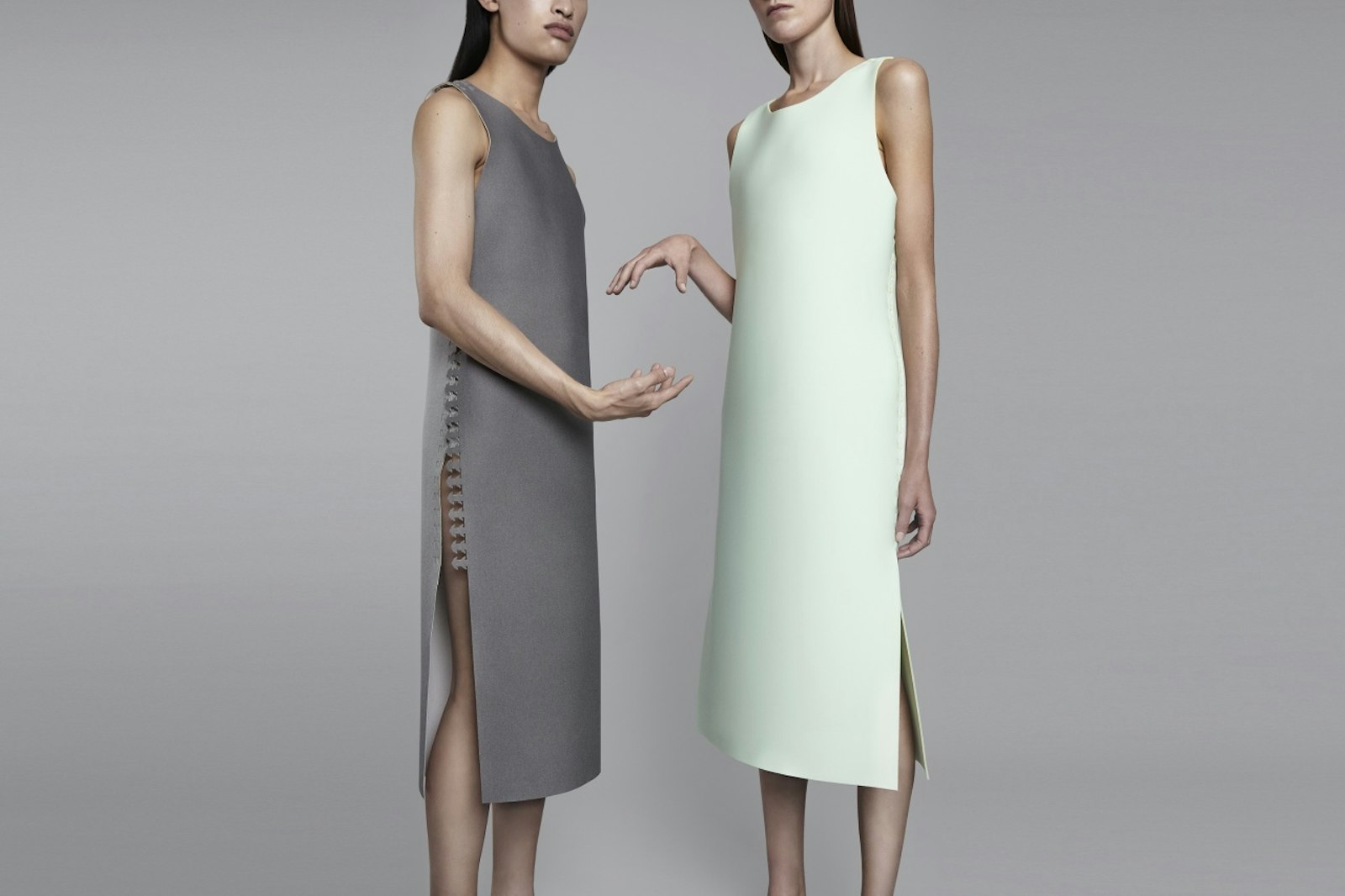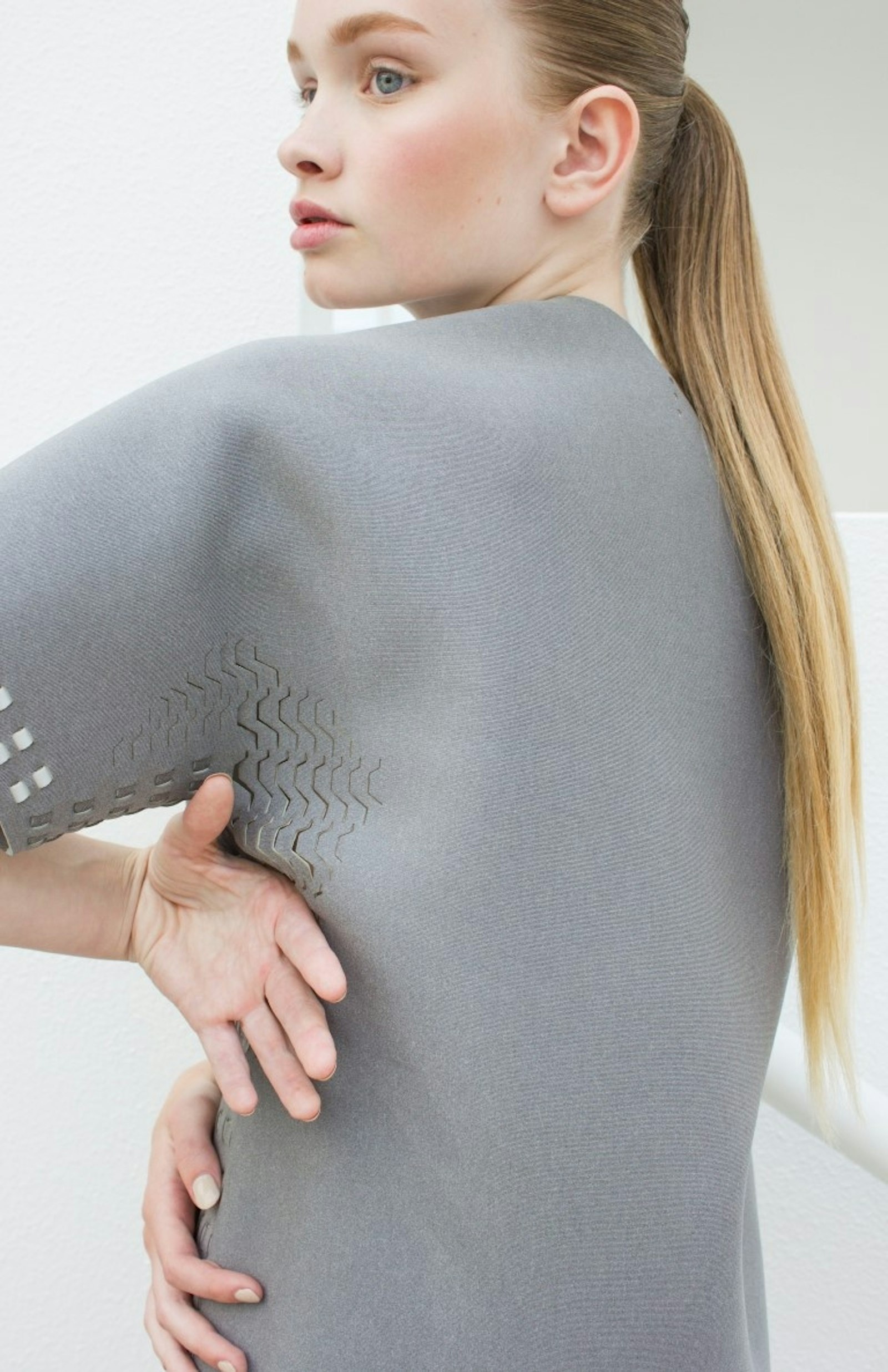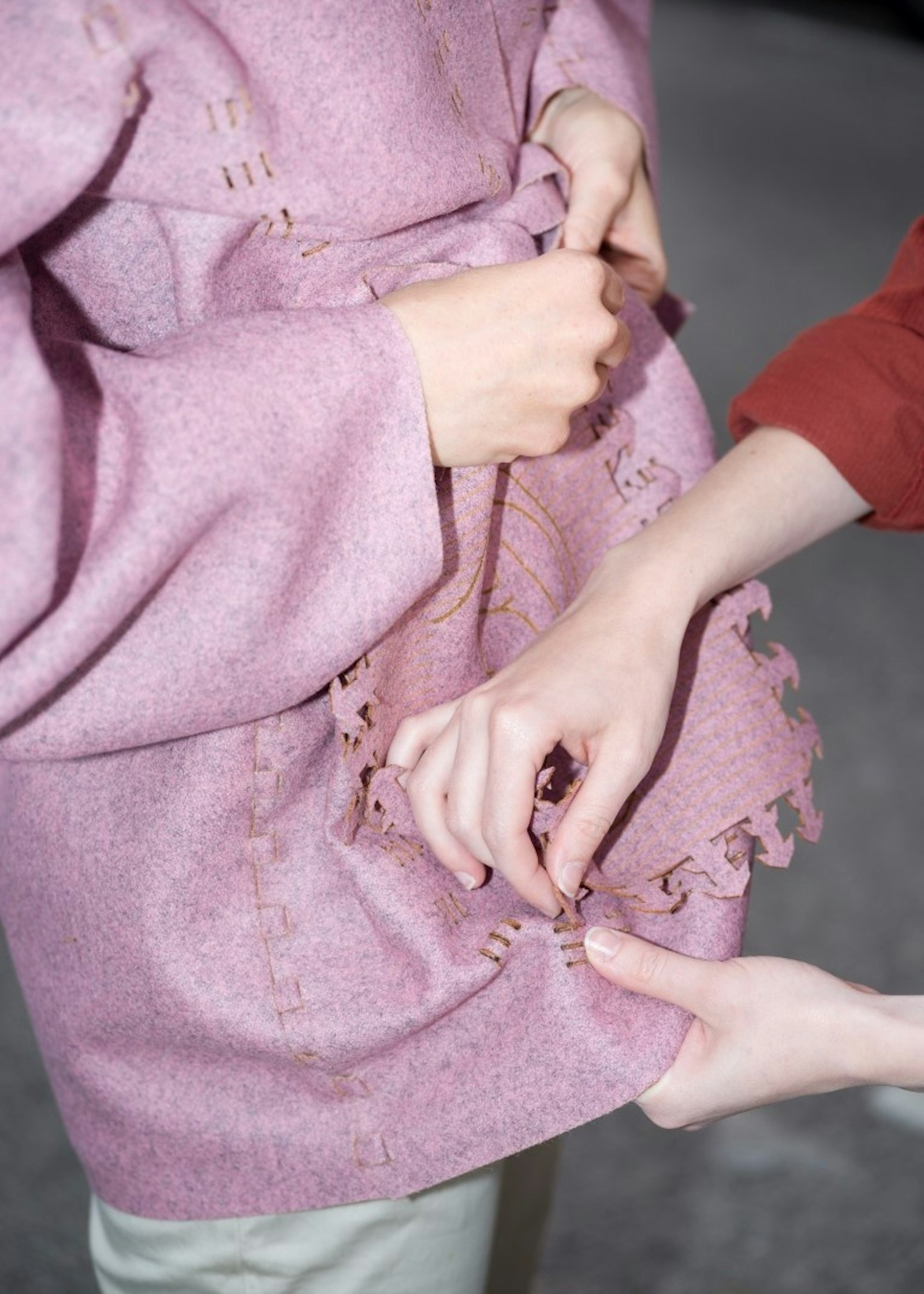de Velde
Post-Couture Antwerp
Over the past few years, clothing has been treated more and more like a disposable product.
The production of clothing is aimed for increasing numbers and production to decrease prices. Low prices seem attractive, but what does this way of producing mean for the future of the environment and the people that work in this industry?
The Post-Couture Collective offers an alternative to today’s fashion system. They are introducing a new era in the production of sustainable and affordable clothing. In their vision clothing is designed on the principles of open-source, and is made using 21st century technology. They are the first fashion label that truly embraces the Maker Movement and the Third Industrial Revolution.
The Post-Couture Collective believes in a future where no garments are massproduced, but instead created on-demand when and where needed. This approach creates a garment industry in which there is no over-production, no dead stock, less transportation and less textile waste.
The Post-Couture Collective develops garment collections for production on lasercutters and 3D printers using bespoke technology. This technology, the Post-Couture system, transforms current clothing designs into Post-Couture designs that are open-source and can be shared digitally. Allowing for local and on-demand manufacturing in Makerspaces or Makershops.
Producing garments on-demand gives customers the opportunity to create affordable couture, made-to-measure and customised to their individual wishes. The Post-Couture Collective encourages the use of materials such as polyester and wool that are either recycled or optimal for recycling without adding additional raw materials. The materials they use are already recycled or can be easily recycled due to the production and assembly process.
To accomplish their vision, they are building a global network of designers, technical researchers and production locations. In collaborations they develop online collections for production on lasercutters and 3D printers. This way the designs can be shared digitally and manufactured locally and on-demand.
Customers become a part of the production process of their made-to-measure garments, creating a more personal connection between the user and their products. This will hopefully create an increased awareness about the problems and chances in this challenged industry.




